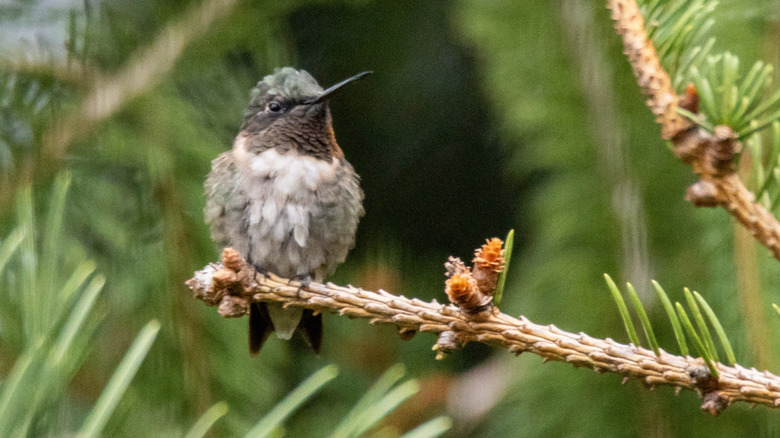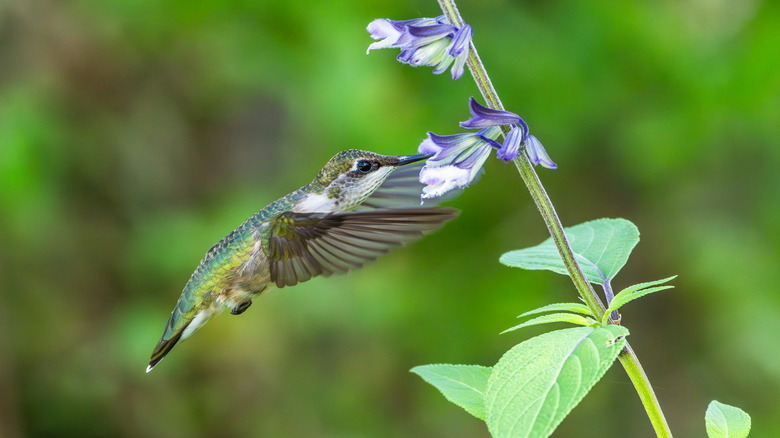The Late-Blooming Salvia Hummingbirds Flock To Every Fall
We may receive a commission on purchases made from links.
With autumn in full swing, hummingbirds are busily preparing for their long journey south, seeking every last drop of nutritious nectar to fuel their travels. You can help by adding colorful plants that will attract hummingbirds to your yard, as other nectar-rich flowers, like bee balm and certain phlox varieties, begin to fade. Flying from as far north as Canada to as distant as Central America, tiny travelers like the ruby-throated hummingbird (Archilochus colubris) need plenty of nourishment to power their long journey.
Because hummingbirds now remain farther north later into the season, with some not even migrating at all (in part, thanks to milder winters), you may have an increased opportunity to see them, especially if you provide them with food sources. Hummingbirds will visit sugar-water feeders this time of year, but planting late-flowering plants like salvias will provide them with natural nectar sources and give less-aggressive hummingbirds a chance to feed. One particularly good choice is the cobalt-blue Salvia 'Lake Como,' part of the Salgoon series and also known as 'Lake Como' sage. A perennial hardy in USDA zones 8–10, it offers spiky, nectar-rich flowers up to 18 inches tall with brilliant color and aromatic, dark-green foliage up to the last frost. Pair it with seasonal mums to draw hummingbirds into your yard or garden before winter.
How to attract hummingbirds to your garden
Plant Salvia 'Lake Como' in full sun or light shade and in moist, well-drained soil — either in your garden or a container — to enjoy its seasonal beauty. Tossing in a handful of well-rotted compost or manure will give it an extra boost. Like other salvias, this cottage-garden showstopper attracts hummingbirds with its tubular blooms, perfectly shaped for a hummingbird's long tongue and bill to reach the nectar. It will also lure bees and butterflies.
For a splash of fiery color, consider adding Scarlet Sage (Salvia splendens), which should be on your list of the best red plants to grow in fall for a garden full of color — hummingbirds are especially drawn to red flowers. But if these two salvia options don't suit your style, don't worry. There are more than 1,000 salvia species, so there's bound to be one that fits your space and ecosystem. If your favorite isn't perennial in your area, plant it as an annual — if it attracts lots of hummingbirds this year, you could plant it again next year.
To make your garden even more hummingbird-friendly, consider adding a birdbath fitted with a solar water fountain near your salvias. The birds will adore flying through or resting under its gentle mist. You can also provide a nearby perch for them to relax after their meal or bath; a hummingbird swing with a ruby-red crystal, like this one from Songbird Essentials, is surprisingly effective at attracting them. Include some salvia in your garden plans this fall, and you'll enjoy a front-row seat as these astonishing little creatures frequent your garden before heading south for the winter.

